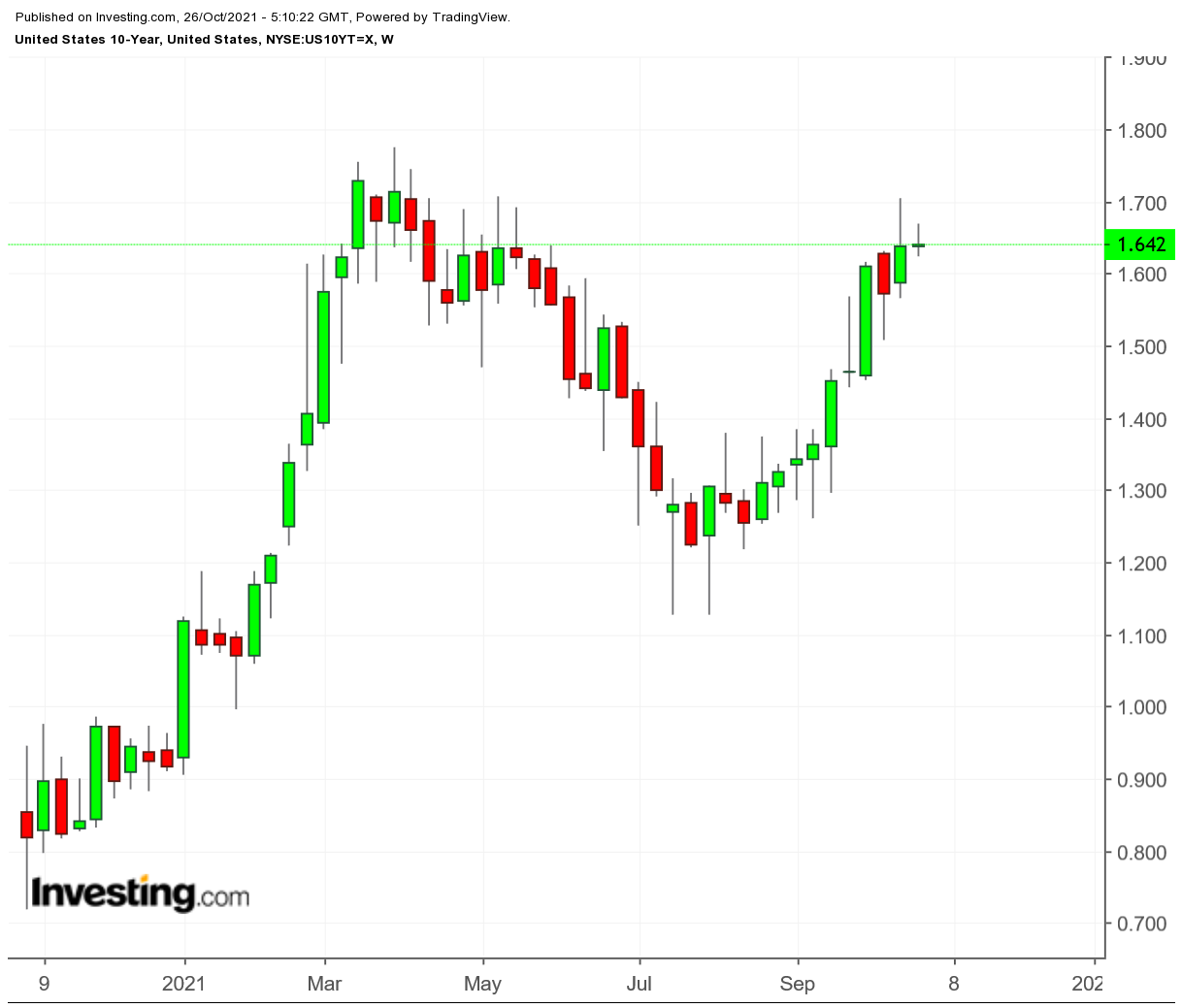There is a good deal of confusion among investors regarding inflation. There are two schools of thought—those who think it is a problem, and those who don't.
Since Treasury Secretary Janet Yellen, a former chair of the Federal Reserve and an accomplished economist in her own right, is in the latter group, investors are cautious about getting too aggressive in anticipating Fed action to raise rates. But Yellen has an agenda, and as a politician may not be as completely trustworthy as she was before.
In any case, on Sunday, Yellen reiterated her view that inflation would fall back to the 2% level by the middle of the second half of 2022. Even so, that is nearly a year away.
Yield on the benchmark 10-year Treasury fell back below 1.64% in Monday trading after hovering at 1.67% earlier in the day.

The 10-year yield briefly topped 1.68% on Friday after last Thursday's weekly jobless claims came in slightly below forecasts at 290,000, indicating that the economic rebound continues to be robust.
Transitory Inflation vs Demand-Driven Price Escalation
Some investment strategists agree with Yellen and Fed Chair Jerome Powell that inflation, even if proving to be more persistent than anticipated, is a transitory phenomenon resulting from supply chain disruptions. They claim it is not demand-driven, although considerable evidence supports that theory—not least the anecdotes from the Fed’s Beige Book, where contacts in the various districts report very high demand pushing up prices.
For now, the doves seem to have the upper hand in policy, as Yellen and Powell can keep pushing out the timeline on inflation declining. Yellen wants to get some semblance of the administration’s ambitious spending plan through Congress and Powell wants maximum employment—and another four-year term as chairman.
The announcement last week by Jens Weidmann, the head of the Germany’s central bank, that he will be stepping down after 10 years of fighting easy money policies on the governing council of the European Central Bank, marked the exit of one of the most prominent central bank hawks. While his successor is likely to still be relatively hawkish, the widespread assumption is that he or she will be less so.
But that doesn’t mean the hawks are wrong. Investors are right to be confused—and cautious. For years, central bankers struggled with legacy ideology that the expansion of central bank balance sheets in the wake of the 2008 financial crisis would lead to inflation. It never did, and now they think such notions are obsolete.
But the earth still revolves around the sun, the laws of gravity still make things fall, and history has not come to an end. Economic fashions come and go and post-Keynesian thought is now ascendant while Milton Friedman—who quaintly thought a flood of money would lead inevitably to inflation—is passé, for now.
Monetarist economist Brian Reading, a veteran of government and media, argues forcefully that stagflation is at hand, as little-noticed cost-push inflation means that rising prices will cause rising unemployment, unlike demand-pull inflation, in which falling unemployment causes rising prices.
His argument—in two recent articles (here and here) for OMFIF (Official Monetary and Financial Institutions Forum), where he is on the advisory board—is subtle, but he joins the growing crowd that debunks the notion widely held at central banks that inflation expectations channel price increases.
Rather, he says, price shocks, transitory as they may be, are as contagious as COVID-19, and spawn wage demands and further price increases that will not fade away quickly. Central banks, which are still supporting “unsustainably overvalued equities” will be obliged to act. A crash, he concludes, is now inevitable, but the sooner central banks withdraw the punch bowl, the better.
Sounds grim, but what if he’s right?
